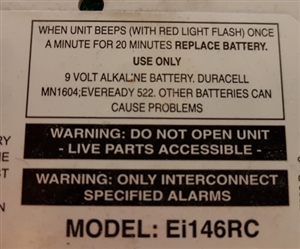
mapj1:
This sketch then .. actually 'ever cell' to avoid any sort of lawsuit from battery makers.
.....
They are not supposed to be recharged, but with careful control of waveform they can be used several times.
That is the sketch - not surprised I couldn't remember the details completely correctly as it is more than thirty years since I saw it. Many thanks for the link.
I agree with you about the recharging. I discovered many years ago you could recharge many supposedly single use batteries, but unless you have the right facilities to do the charging safely the cost benefit/risk balance just doesn't weigh up.
Sparkingchip:
Wrong kind of electric part I.
I must have missed that first time, but the issue rang a bell. Oddly enough, very recently a colleague (no really, not me this time) has only recently released the magic smoke from some mains powered kit by using it from an inverter with less than sinusoidal output.
On investigation, the failed unit used a power supply circuit that was transformerless, using a capacitive dropper from mains with a small series resistor and some diodes to create a low current DC supply for an LCD and some other bits and bobs for logging.
Clearly with a sine wave the capacitor does its thing (X= 1/(2.pi.F.C)), and the current flowing in the C and the rest of the power supply is almost a sine wave, and all is hunky dory.
When the supply has step-like edges however, then the current in the capacitor takes the form of a series of very short duration high current surges, one surge per voltage step, and the dissipation in series resistance is then very 'peaky', almost like the shock of an inrush event each half cycle.
Replacing the R with a higher wattage one restored some normality, but it had folk standing about and thinking for a few minutes.
If the smoke alarms in that post use the mains in a similar way, they also may not appreciate the near vertical sides (high rate of change of voltage) that some inverter designs produce.
We're about to take you to the IET registration website. Don't worry though, you'll be sent straight back to the community after completing the registration.
Continue to the IET registration site